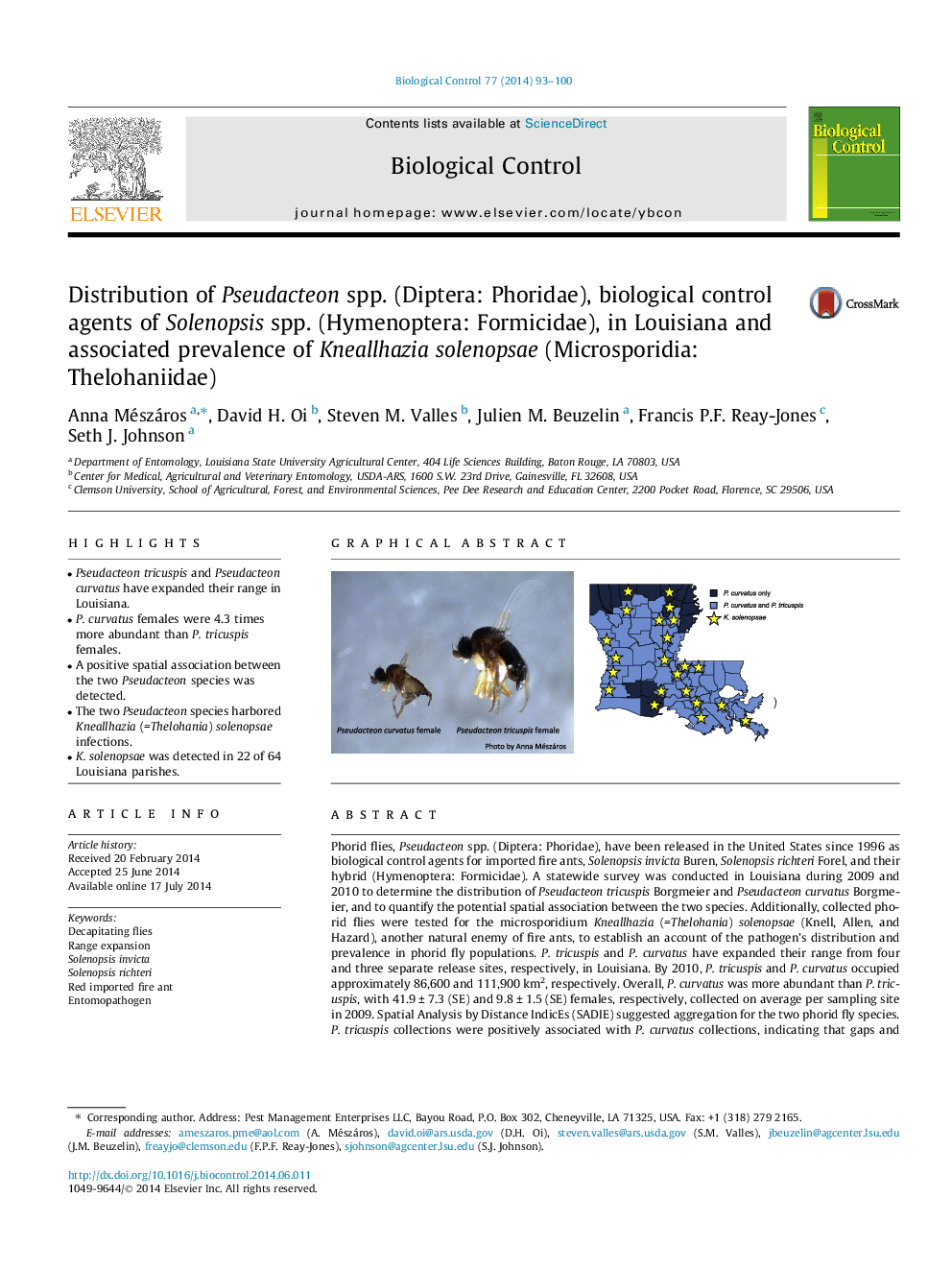| کد مقاله | کد نشریه | سال انتشار | مقاله انگلیسی | نسخه تمام متن |
|---|---|---|---|---|
| 4503873 | 1624257 | 2014 | 8 صفحه PDF | دانلود رایگان |

• Pseudacteon tricuspis and Pseudacteon curvatus have expanded their range in Louisiana.
• P. curvatus females were 4.3 times more abundant than P. tricuspis females.
• A positive spatial association between the two Pseudacteon species was detected.
• The two Pseudacteon species harbored Kneallhazia (=Thelohania) solenopsae infections.
• K. solenopsae was detected in 22 of 64 Louisiana parishes.
Phorid flies, Pseudacteon spp. (Diptera: Phoridae), have been released in the United States since 1996 as biological control agents for imported fire ants, Solenopsis invicta Buren, Solenopsis richteri Forel, and their hybrid (Hymenoptera: Formicidae). A statewide survey was conducted in Louisiana during 2009 and 2010 to determine the distribution of Pseudacteon tricuspis Borgmeier and Pseudacteon curvatus Borgmeier, and to quantify the potential spatial association between the two species. Additionally, collected phorid flies were tested for the microsporidium Kneallhazia (=Thelohania) solenopsae (Knell, Allen, and Hazard), another natural enemy of fire ants, to establish an account of the pathogen’s distribution and prevalence in phorid fly populations. P. tricuspis and P. curvatus have expanded their range from four and three separate release sites, respectively, in Louisiana. By 2010, P. tricuspis and P. curvatus occupied approximately 86,600 and 111,900 km2, respectively. Overall, P. curvatus was more abundant than P. tricuspis, with 41.9 ± 7.3 (SE) and 9.8 ± 1.5 (SE) females, respectively, collected on average per sampling site in 2009. Spatial Analysis by Distance IndicEs (SADIE) suggested aggregation for the two phorid fly species. P. tricuspis collections were positively associated with P. curvatus collections, indicating that gaps and clusters of both species generally overlapped. K. solenopsae was detected in 22 of 64 parishes, and among 124 collection sites tested, 19% yielded positive responses for K. solenopsae. P. tricuspis males and females and P. curvatus females were found to harbor K. solenopsae. This study is the first to detect K. solenopsae in P. tricuspis.
Figure optionsDownload as PowerPoint slide
Journal: Biological Control - Volume 77, October 2014, Pages 93–100